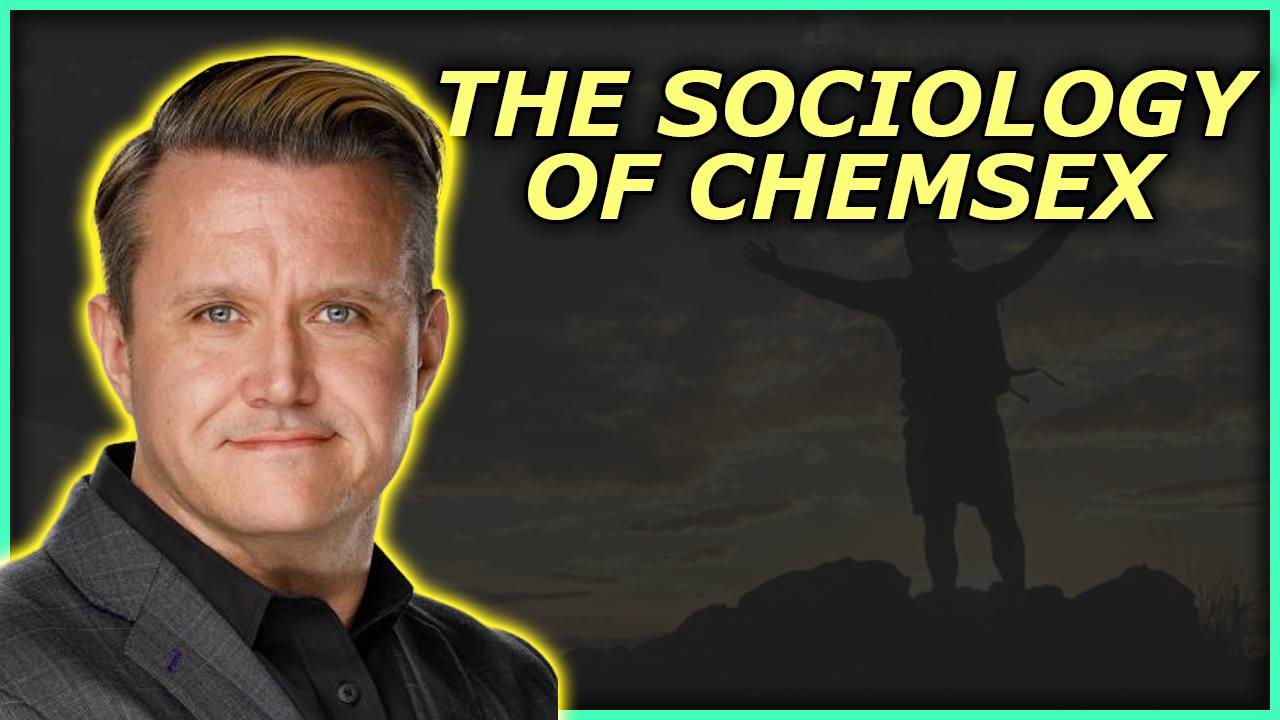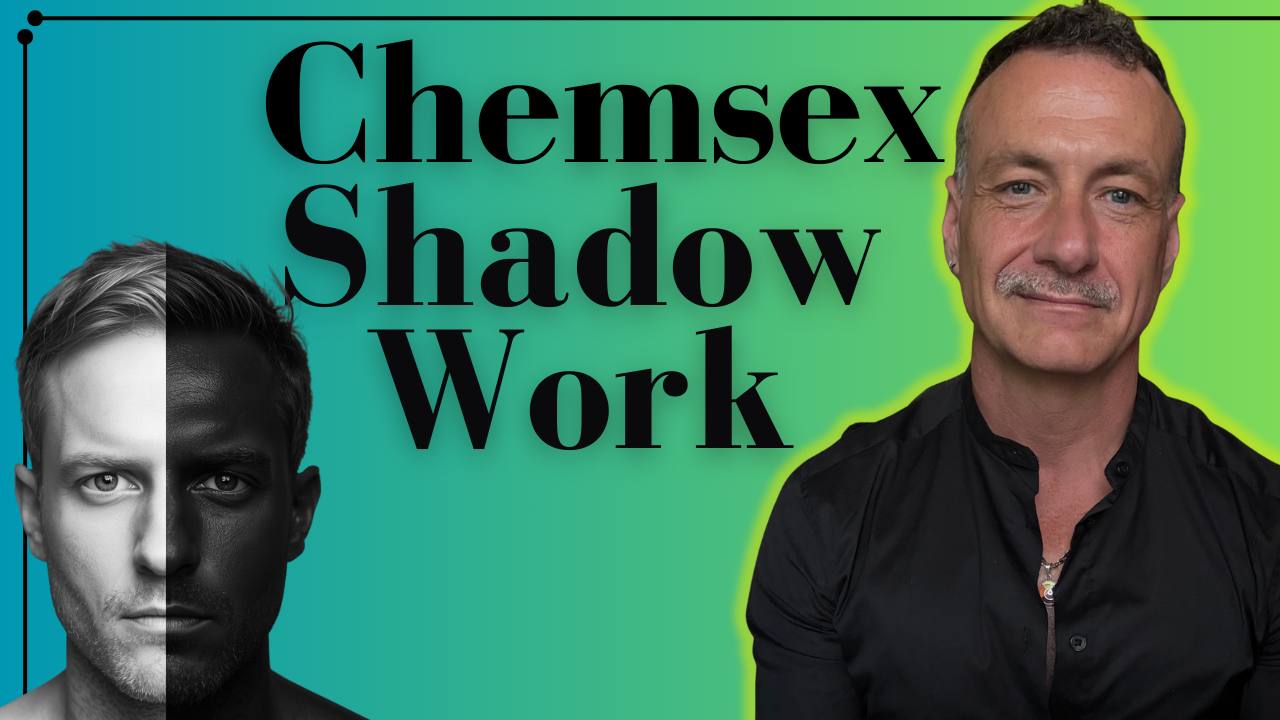Attachment Styles and Chemsex Addiction

There's something so exciting about the texting dance that occurs after you match with someone from a dating app (at least the ones who are able to carry on a conversation).
I guess you could say it's the modern version of "courtin'."
I used to love sharing and learning with new matches. At one time, I used the questions from Inside the Actor's Studio:
- What is your favorite word?
- What is your least favorite word?
- What turns you on?
- What turns you off?
- What is your favorite curse word?
- What sound or noise do you love?
- What sound or noise do you hate?
- What profession other than your own would you like to attempt?
- What profession would you not like to do?
- If Heaven exists, what would you like to hear God say when you arrive at the Pearly Gates?
Eventually, we would get around to setting a date to meet up.
The first date.
Something really strange happened to me after that first encounter.
Every.
Single.
Time.
If it went well, that is.
I would flip into clingy mode.
Eyeing my phone for their text.
Checking to see if they were online if they hadn't replied.
Dropping everything I was doing to reply when they did text.
Staying up later than I normally would, just in case they replied to a text.
Being sick to my stomach if I hadn't heard from them in the last 20 minutes.
Completely frozen from accomplishing anything in my day, wondering what they were doing.
And don't even ask about what I would do if they didn't use an emoji or punctuate the way I expected.
...this was all after ONE date.
THAT's how I gauge how ready I am to date.
Clingy Dallas needed to process some abandonment trauma.
Clingy Dallas needed to learn how to be alone.
Clingy Dallas needed to understand self-love.
Clingy Dallas didn't address these needs soon enough before Meth came to solve them.
In recovery, I learned that this behavior is normal and is known as Anxious Attachment.
In today's podcast, we will learn more about attachment styles and how they manifest as chemsex addiction.
Listen to the podcast HERE:
Watch the podcast HERE:
This study guide explores how attachment styles—secure, anxious, avoidant, and disorganized—influence addiction and recovery patterns.
As Mauricio Alvarez, clinical psychologist and addiction specialist, explains, understanding attachment styles offers valuable insights into why some people develop addictions while others don't, and why recovery journeys look different for each person.
By understanding your attachment style, you can develop more effective strategies for healing and maintaining sobriety.
Understanding Attachment Theory
Attachment theory, developed by John Bowlby, explains how our relationships with primary caregivers create internal working models that guide our relationships throughout life.
As Mauricio describes it, attachment is fundamentally about safety strategies—how we ensure our survival in the face of adversity and complexity.
These internal working models determine:
- How we see ourselves (worthy or unworthy of love)
- How we view others (trustworthy or untrustworthy)
- How we manage emotions and seek safety in relationships
The four main attachment styles include:
Secure Attachment
- Self-view: Worthy of love and support
- View of others: Generally trustworthy and available
- Emotional regulation: Flexible, able to seek help when needed
- In recovery: More likely to reach out for support, maintain boundaries, and develop healthy coping mechanisms
Anxious Attachment
- Self-view: Questionable self-worth, needs validation
- View of others: Unpredictable but essential for validation
- Emotional regulation: Hyperactivated, intense emotional responses
- In recovery: May struggle with loneliness, crave constant reassurance, and experience intense fear of rejection
Avoidant Attachment
- Self-view: Self-reliant, doesn't need others
- View of others: Unreliable, potentially threatening to independence
- Emotional regulation: Deactivated, minimizes emotions
- In recovery: May resist asking for help, downplay emotions, and maintain a facade of control
Disorganized Attachment
- Self-view: Confused, contradictory beliefs about self
- View of others: Both source of safety and danger
- Emotional regulation: Chaotic, unpredictable
- In recovery: May experience confusing, contradictory impulses and struggle with consistent recovery plans
How Attachment Styles Influence Addiction and Recovery
The Neurobiological Connection
As Mauricio explains, addiction isn't just about the chemical component—it involves multiple brain pathways related to both reward systems and social behavior.
These pathways affect how we soothe ourselves when facing danger, fear, and complexity.
Addiction affects brain regions involved in reward processing, executive functioning, and emotion regulation—the same areas that support secure attachment.
When these systems are compromised, our ability to relate to others and regulate our emotions becomes impaired.
Two key neurotransmitters play crucial roles:
- Dopamine: Associated with reward and craving (the "seeking system")
- Oxytocin: Associated with bonding, connection, and soothing
Mauricio points out that substances like methamphetamine create an intense dopamine rush that's "pretty much impossible to replicate without the substance."
This artificial stimulation creates dependency.
As Mauricio emphasizes, recovery involves rebalancing these systems—a process that takes time but is absolutely possible.
Attachment-Based Recovery Triggers
Understanding your attachment style helps identify your unique vulnerability points:
Anxious Attachment Triggers:
- Being alone (weekends, holidays)
- Perceived rejection or abandonment
- FOMO (fear of missing out)
- Relationship conflicts
- Uncertainty in relationships
Avoidant Attachment Triggers:
- Emotional intimacy becoming too intense
- Feeling vulnerable or exposed
- High emotional intensity in any domain
- Performance pressure or perfectionism
- Loss of independence
Disorganized Attachment Triggers:
- Any situation triggering contradictory impulses
- High stress environments
- Unpredictable situations
- Feeling both drawn to and repelled by connections
- Experiencing trust issues with support systems
Self-Assessment: Identifying Your Attachment Style
While formal assessment requires professional guidance, these reflective questions can help you begin exploring your attachment patterns:
Reflective Questions
-
How do you typically respond when someone close to you becomes emotionally distant or unavailable?
- Do you pursue them intensely? (Anxious)
- Do you withdraw and focus on self-reliance? (Avoidant)
- Do you feel confused about what to do? (Disorganized)
- Do you acknowledge your feelings and communicate openly? (Secure)
-
What happens when you experience strong emotions during recovery?
- Do you immediately seek others for comfort? (Anxious)
- Do you prefer to handle emotions privately and minimize them? (Avoidant)
- Do you feel overwhelmed by contradictory impulses? (Disorganized)
- Do you acknowledge emotions and use a variety of coping strategies? (Secure)
-
How comfortable are you asking for help during difficult recovery moments?
- Do you worry about being a burden while simultaneously needing reassurance? (Anxious)
- Do you resist asking for help, believing you should handle it alone? (Avoidant)
- Do you feel confused about whether help is safe or dangerous? (Disorganized)
- Do you reach out appropriately, knowing when you need support? (Secure)
-
When thinking about your childhood, how would you describe your relationship with your primary caregivers?
- Was there consistency and responsiveness to your needs? (Secure)
- Was there unpredictability that made you vigilant and anxious? (Anxious)
- Did you learn to be self-sufficient because needs weren't met? (Avoidant)
- Was the caregiver both a source of comfort and fear? (Disorganized)
-
How do you typically view relapses or setbacks in your recovery?
- As confirmation of your unworthiness? (Anxious)
- As proof that you should rely only on yourself? (Avoidant)
- With confusion about what they mean about you? (Disorganized)
- As learning opportunities that don't define your worth? (Secure)
Moving Toward Secure Attachment in Recovery
As Mauricio explains, "Recovery from chems can be quite long. One thing is to stop using, to manage your triggers and understand that and maybe for a couple of months, say six to eight months, you're able to stay sober. That's enough to get your brain to start rewiring itself. But then you also need to add a social component, a supportive friend group, a community that is present for you."
Attachment styles can change through new experiences and intentional practice. Recovery offers an opportunity to develop more secure attachment patterns through:
- Consistent relationships with sponsors, therapists, and support groups
- Self-awareness about attachment triggers and patterns
- Neuroplasticity as the brain heals from substance use
- Healthy boundaries that protect your recovery
- Self-compassion practices that build internal security
- Mentalization skills that Mauricio describes as "the ability to see yourself through other people's eyes"
Remember that healing attachment wounds takes time. The brain's reward and bonding systems need months to rebalance after substance use ends. Be patient with yourself during this process.
Conclusion
As Mauricio emphasizes, understanding your attachment style is about recognizing your "blind spots" and identifying your "Achilles heel" in recovery.
It's not about labeling yourself, but about understanding your unique patterns of relating to yourself and others.
Understanding your attachment style provides valuable insight into your addiction and recovery patterns.
By recognizing your unique triggers and developing strategies based on your attachment needs, you can build more secure relationships with yourself and others, strengthening your recovery journey.
Love you all- Dallas
Recommended Resources
-
Books (Recommended by Mauricio):
- "Attached" by Amir Levine and Rachel Heller
- "The Compassionate Mind" by Paul Gilbert
- "Out of the Shadows: Reimagining Gay Men's Lives" by Walt Odets
-
Professional Support:
- Individual therapy with attachment-informed therapists
- Couples therapy for relationship healing
- Group therapy for practicing secure attachment skills
- Services like Controlling ChemSex (where Mauricio volunteers)
Remember: As Mauricio points out, attachment styles can change with experience. Your attachment style is not your fault or your destiny—it's a pattern that can be understood and transformed through awareness, support, and practice.
Journal Prompts
-
Safety and Danger: Reflect on times when the people or substances you turned to for comfort became sources of pain. How has this pattern affected your ability to form trusting relationships in recovery?
-
Loneliness Strategies: Write about how you typically respond to feeling lonely. What healthy strategies could replace substance use when feeling isolated?
-
Intimacy Patterns: Describe your comfort level with emotional intimacy. Do you pursue it intensely, avoid it, or feel confused about it? How has this affected your recovery journey?
-
Attachment and Addiction Timeline: Create a timeline noting significant relationship events alongside changes in your substance use. What patterns do you notice?
-
Recovery Support System: Reflect on your current support network. How do you interact with them based on your attachment style? What changes might create more secure connections?
Action Exercises
-
Create an Attachment-Based Relapse Prevention Plan
- Identify your attachment-specific triggers (e.g., rejection for anxious, intimacy for avoidant)
- Develop coping strategies addressing your unique vulnerability points
- List specific people to contact when these triggers arise
- Practice asking for help before reaching crisis point
-
Develop a "Secure Base" Practice
- Identify one person who feels consistently safe and supportive
- Schedule regular check-ins with this person
- Practice being honest about your needs
- Notice how it feels to receive support without substances
-
Emotional Regulation Calendar
- For one week, track emotions without judging them
- Note how you respond to different emotional states
- Identify which emotions trigger substance cravings
- Practice one new regulation technique daily (deep breathing, grounding, etc.)
-
Relationship Boundary Exercise
- Identify one relationship boundary you need to establish
- Write out exactly what you'll say to establish this boundary
- Practice with a therapist or trusted friend
- Implement the boundary and journal about the experience
-
Self-Compassion Practice
- When experiencing cravings or difficult emotions, place your hand on your heart
- Acknowledge your struggle without judgment: "This is a moment of suffering"
- Recognize the universal nature of struggle: "Many others feel this way too"
- Offer yourself kindness: "May I be kind to myself in this moment"





Responses